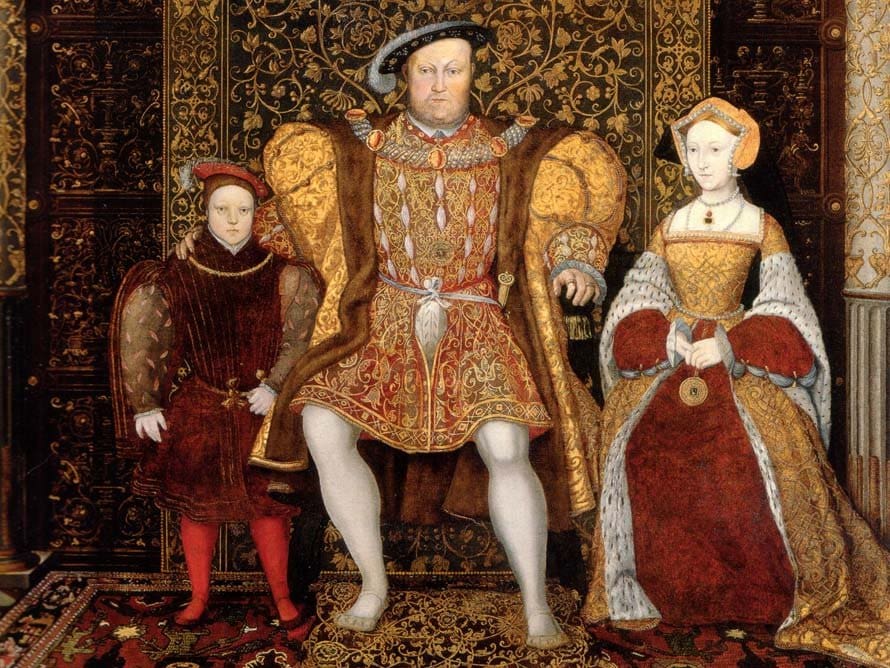For the Tudor and Stuart elite, luxurious clothing was an essential component of court life. Garments and accessories – and the way in which they were worn – conveyed important messages about wealth, gender, age, social position, marital status and religion.
This article features the changing tastes in fashionable attire in Great Britain in the 16th and 17th centuries. Using paintings, drawings and miniatures from the Royal Collection, and a number of rare surviving examples of clothing and accessories, it explores the style of the rich and famous of the Tudor and Stuart periods.
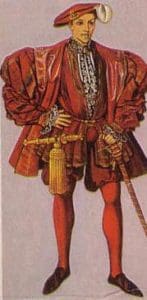
Man’s Formal Clothes about 1548
This refined man wore an over-outfit with full upper sleeves adding broadness to his shoulders, chic from around 1520. His doublet is free with a crease at the abdomen and skirts, and his upper stocks (breeches) are discrete from his hose for more noteworthy solace.
He has a cushioned ‘cod piece’ and his shirt is weaved in dark silk with little ornamentations at the neck, which in the long run will form into the ruff. His top is milder and more extensive and his shoes are less expansive in the toe than in the early years of Henry VIII.
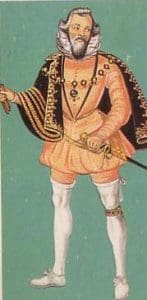
Man’s Formal Clothes about 1600
This man of honor in this decade wore a cushioned doublet with pointed abdomen and short cushioned breeches, with tightening ‘canion’ at the knee, over which the stocking is pulled. The ‘Spanish’ shroud is vigorously embroidered.they as a rule wore a treated and accumulated ruff, created from the shirt neck ornamentation after around 1560. The gems incorporates the neckline of the Order of the Garter. Their cap would have been funnel shaped fit as a fiddle.
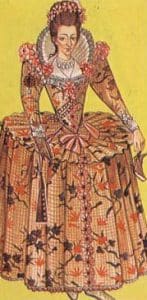
Lady’s Formal Dress about 1610
This woman shows the dress which originally showed up in the later pictures of Queen Elizabeth around 1580 and stayed in vogue in the rule of James I. The bodice is exceptionally since quite a while ago, pointed and solid, and the wide skirt is upheld by hip ‘boulsters’ of the ‘drum farthingale’.
The sleeves were wide with low neck area, and the ruff open to outline the face. It is cut with ribbon recently presented from Flanders and Spain. The creased fan in her grasp is a style received from China. Trendy women not, at this point wore a top and her revealed hair is dressed high with strips and quills.
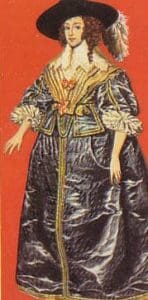
Lady’s Day dress about 1634
This woman wears a delicate silk strolling dress with the short midriff and full streaming skirt in vogue from around 1620. The bodice of the dress is cut practically like a man’s doublet and similarly manly are her wide-plumed cap. She wears a fine wide Flemish ribbon neckline veiling the gold interlace on her bodice. For formal events the neck would be left uncovered, and the hair dressed with gems.

Man’s Day Clothes about 1629
The man above wore a suit with the new milder line. The short-waisted doublet with long skirts has cuts on the chest and sleeve, taking into account development. The knee-length breeches, full however not cushioned, are bolstered by snares inside the waistline. The strip ‘focuses’ at midsection and knee are embellishing overcomers of the binding hose supports generally medieval occasions. The ribbon cut ruff tumbles to the shoulders and the hair is long with a ‘lovelock’. Boots and gloves are of delicate calfskin.
The period 1642 – 1651 was a period of contention known as The English Civil War between King Charles I and his adherents (frequently alluded to as Cavaliers) and Parliament. This was the second time of common war in England’s history, the first being the Wars of the Roses fought somewhere in the range of 1455 and 1487.
Lord Charles I was executed in 1649. The Third Civil War was battled between supporters of his child Charles II and Parliament and finished at the Battle of Worcester on third September 1651. The period after the Civil War is known as The Commonwealth and went on until the reclamation of King Charles II in 1660.

Man’s Day Clothes about 1650
This man of his word wears a suit dependent on the Dutch molds then well known. It has a short-non-solidified coat and wide breeches balancing free to the knee. Dull hues were commonly worn and not kept to adherents of Parliament. Coordinating interlace were accommodated cutting purposes. He additionally wears a shroud and a limited overflowed cone shaped cap.

Lady’s Formal Dress about 1674
The dress above shows the adjustment in the waistline in the skirt since 1640. The bodice is cut low and solidified with short sleeves gave to show more trim and the strip cut shift. The skirt is made to wear open, showing the intricately cut underskirt. Bogus twists were here and there added to the wide-dressed hair.

Lady’s Formal Dress about 1690
In the late seventeenth century, the dresses had gotten all the more hardened, formal and dependent on French court designs. Trim laces were sewed on the move to be appeared at the neck and sleeves. The most trademark include is the hair, starting to be dressed high in the 1680’s. This style was named after Mlle. de Fontanges, a most loved of Louis XIV, who is accepted to have started it. This tall headress was framed of a few columns of collapsed trim and strips, transcending the other and bolstered on wires.
– by Anushka Dwivedi
picture credits-(google images)
References
- https://www.historic-uk.com/CultureUK/Tudor-Stuart-Fashion/
Follow Social Media to get Regular updates , Account details :
-
- Facebook : fashionvaluechain
- Instagram : fashionvaluechain
- Pinterest: fashionvaluechain
- Linkedin : fashionvaluechain
- twitter : fvcmedia

